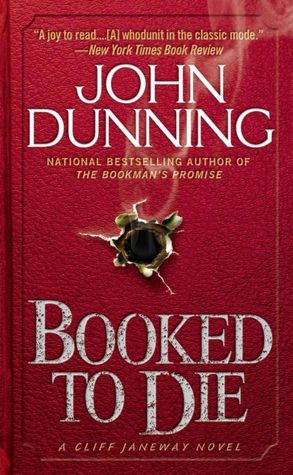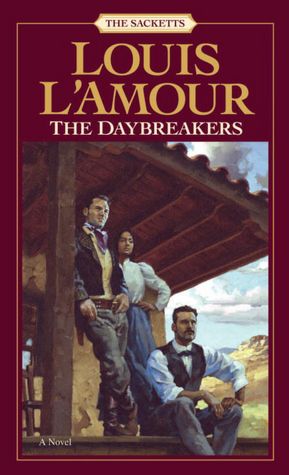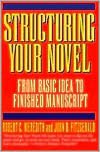There is no answer to boredom. -- Katherine Fullerton Gerould
No one will
read your story if it isn’t interesting.
So one of the first problems of a fiction writer is to make his story
interesting. It must be interesting to
the writer (else he will not complete it) and it must be interesting to the
reader. Since reader interests vary
widely, and in particular may vary from your own, this may seem a shot in the
dark, a pig in the poke, a bird in the bush, a vote for… You get the picture. But while there is no royal road to
story-writing, there are certain peasant footpaths.
A story usually
presents either a Decision to be Made
or a Problem to be Solved. These define two distinct kinds of fictions,
sometimes said to be distinguished by having a Story Line or a Plot Line,
respectively. However, today’s remarks apply
to both kinds of stories.
One day, Jimmy decided he would drive the
family car to St. Louis.
Okay, we know
who has set out to accomplish what. But
it’s not very interesting. Why would
anyone read further? So, how about:
As the dust from the asteroid strike began
settling over the ruins of Denver, Jimmy decided he had better take the family
car and high-tail it to St. Louis before the engine became choked with grit.
That’s
better. We not only know the Situation
(drive to St. Louis) but we know why it’s Important. Try this:
As the dust from the asteroid strike began
settling over the ruins of Denver, Jimmy decided he had better take the family
car and high-tail it to St. Louis before the engine became choked with
grit. But first he had to tie wooden
blocks to his sneakers so his feet could reach the pedals.
Wait. He’s a kid? Why is he driving the family car? Where are his parents? Why St. Louis? WHAT’S GOING ON HERE?
Omniae fabulae in tres pars divisa sunt
Everything
comes in threes, did you ever notice?
Partly, this is because after three we stop counting and start over; but
partly because three is the least number that lends stability. Consider a two-legged stool; or a two-sided
geometric figure. What about a bicycle, TOF hears you say. Ah, but there is a third wheel: the gear
wheel connected by a chain to the rear wheel. Ha-ha!
The three parts
of a story are the Beginning, the Body, and… but you’re way ahead of me. Yes, you have leapt to a Conclusion. The Laws of Interest apply to all three
parts, but they apply to each part differently, because, you guessed it, there
are three kinds of Interest.
- Curiosity. What is going on here? Capture the interest.
- Suspense. What will happen next? Sustain the interest.
- Satisfaction. So that’s what it all meant. Resolve the interest.
TOF will leave
it as an exercise to Constant Reader to determine which sort of interest
applies to each principle part of a Story.
#
Compound Interest..
We often hear it
said that there are no rules for writing fiction. In fact, there are, but they are not a
“formula.” They are more akin to a
carpenter’s toolkit than to a carpenter’s blueprint. A carpenter's rule helps him build a cabinet, but it does not tell him how to build it. To generate Interest, the author does not
follow a series of steps, but employs a set of techniques. These so-called Laws of Interest were laid out in John Gallishaw’s 1929 book, The Twenty Problems of the Fiction Writer.
Yes, TOF can
hear your sighs of relief: only twenty? We can handle that!
Gallishaw’s wrote
during the heyday of the Modern Ages. In
our more visual, TV-oriented era his writing seems a bit pedantic; but TOF will
go with the flow.
The Beginning
is that portion of the Story in which the Main Narrative Problem is set out
(the Story Situation) and its plausibility justified (the Explanatory
Matter). The Beginning is however long
this takes. It ought to be done rather
quickly, but could encompass the bulk of the Story! In The
Lord of the Rings, the Main Story Problem – can Frodo destroy the One Ring
in the fires of Mount Doom? – does not emerge until the Council of Elrond; and
(speaking of rings) we don’t learn about the Ringworld until chapter six of
that novel. (Well, technically we don’t. The title was kind of a hint.)
#
Curiosity Kills Cats, Not Readers
The Beginning
captures the reader’s interest by eliciting Curiosity, a single desire to know more. Gallishaw lists seven overlapping ways to
capture interest in the Beginning of the Story:
1. A Title that is arresting, suggestive,
and challenging.
2. A Story Situation. Some feat to be
accomplished or some course of
conduct to be chosen.
The Explanatory Matter. The conditions precipitating the Story
Situation, including:
3. Importance of the Story Situation,
intrinsically or synthetically through foreshadowing,
4. Something unusual in the Story Situation or the
character of the Chief Actor
5. Original conception or interpretation
so that the apparently usual is made unusual.
6. A contrast or juxtaposition of opposites.
7. The foreshadowing of difficulty, conflict,
or disaster to carry interest over into the Body of the Story.
Let’s take
these, one by one.
#
1. A Title that is arresting,
suggestive, and challenging.
TOF discussed
the Title in an earlier post.
#
2. A Story Situation.
There are two
basic kinds of Situations:
·
Story of
Accomplishment: Some feat to be accomplished. The Situation is called a Story Purpose. These stories are said to have a Plot Line.
·
Story of
Decision: Some course of conduct to be chosen. The Situation is called a Story Problem. These stories are said to have a Story Line.
Most popular
fictions are Stories of Accomplishment.
Much of literary fiction consists of Stories of Decision. Readers of the former often complain that in
the latter “nothing happens.” Readers of
the latter scoff at the former because there is little character
development. But an interesting plot can
make up for ordinary characters; and interesting characters can make up for an
ordinary plot. It’s a matter of
emphasis. Superior stories do both. We will return to this topic in a later post, when we discuss the Body.
In laying out
the Story Situation, the author presents happenings that make clear to the
reader that the Story Situation calls
upon the Chief Actor to engage at once in action. This is often triggered by a force outside
the personality of the Chief Actor that knocks him “off track.”
- Ancient Shores (Jack McDevitt). A North Dakota farmer unearths a buried sailboat made of a substance unknown to modern science and knocks Max Collingwood, a family friend, and April Cannon, a chemist he hires, out of their ruts.
- Jumper (Steven Gould). When his abusive father begins to beat him with a belt buckle, Davy Rice discovers he can teleport himself out of harm’s way.
- Lest Darkness Fall (L. Sprague deCamp). A lightning bolt knocks Martin Padway, an archeologist, out of modern (1930s) Rome into the Gothic Italy of the Sixth Century.
- Ringworld (Larry Niven). Nessus, a Pierson’s Puppeteer, visits the bored-with-life Louis Wu and knocks him out of his rut by promising a voyage beyond Known Space to investigate a strange artifact the puppeteers have discovered.
- Up Jim River (Michael Flynn). The challenge by the harper to help her find her missing mother is the force that knocks the scarred man out of his comfortable rut in the Bar of Jehovah.
 Each of these triggers is external to the character
of the Main Actor: to Max and April, Davy, Martin, Louis, and Donovan
buigh. Similarly, the events of Madame Bovary are a chain reaction that starts
with Charles’ decision to become a doctor, something external to Emma’s
character. In Booked to Die (Dunning), the murder of bookscout Bobby Westfall
triggers a series of events in the personal and professional life of Denver cop
Cliff Janeway. In Good Behavior (Donald Westlake), the kidnapping of a nun by a
deprogrammer leads the convent to hire the hapless burglar John Dortmunder as
rescuer. In The Daybreakers (Louis L’Amour) the attempt by Long Higgins to kill
Orrin Sackett sets Orrin and his brother Tyrel on the road west.
Each of these triggers is external to the character
of the Main Actor: to Max and April, Davy, Martin, Louis, and Donovan
buigh. Similarly, the events of Madame Bovary are a chain reaction that starts
with Charles’ decision to become a doctor, something external to Emma’s
character. In Booked to Die (Dunning), the murder of bookscout Bobby Westfall
triggers a series of events in the personal and professional life of Denver cop
Cliff Janeway. In Good Behavior (Donald Westlake), the kidnapping of a nun by a
deprogrammer leads the convent to hire the hapless burglar John Dortmunder as
rescuer. In The Daybreakers (Louis L’Amour) the attempt by Long Higgins to kill
Orrin Sackett sets Orrin and his brother Tyrel on the road west.
#
This Story Situation puts the Chief Actor
at odds with some element of his Environment.
- The Chief Actor may be singular (Davy in Jumper) or plural (the harper and the scarred man in Up Jim River). (Plural actors may have plural problems. The harper must find her mother. The scarred man must come to terms with his split personalities.)
- The Environment includes a physical setting, the human interactions (moral, social, cultural) within that setting, and an atmosphere that is the emotional mood of the setting.
Meredith and
Fitzgerald, in Structuring Your Novel, list
ten ways to place your Chief Actor in conflict with his environment. They are not mutually exclusive and while a
short story might employ one, a novel is likely to employ two or more.
1.
A change
in the environment. Scout growing to
school age in To Kill a Mockingbird puts
her tomboy character in conflict with her new, older role. Colin Ferguson and his scattered family are
faced with the effects of the eruption of Yellowstone in Harry Turtledove’s Supervolcano:Eruption. The change need not be to a physical
environment. In “Nano Comes to Clifford
Falls” (Nancy Kress), the social fabric of life changes when nanotechnology
becomes easily available.
2.
Uprooting
the Chief Actor and placing him in a strange environment. Martin Padway dumped into Ostrogothic Italy in
Lest Darkness Fall. In Up
Jim River, Donovan buigh is uprooted from his niche in the Bar of
Jehovah. The eponymous Dr. Zhivago is uprooted from his
comfortable bourgeois life by the Russian Revolution.
3.
An
environment in conflict with another environment. The
Grapes of Wrath places the
environment of the migrant worker in conflict with that of the fruit growers. In Eifelheim
(Flynn), the environment/culture of the Krenken is in conflict with that of the
German peasants.
4.
The Chief
Actor wants to change an environment. The settlers in Kim Stanley Robinson’s Red Mars trilogy want to change the
physical environment of Mars. Martin
Padway in Lest Darkness Falls wants
to stave off the Dark Age.
5.
The Chief
Actor wants to conquer an environment. In G. David Nordley’s story “Into the Miranda
Rift,” Wojciech Bubka and his fellow cavers/climbers set
out to “climb” through Uranus’ moon Miranda, which is a ball of rubble with
caves, cracks, tunnels, and empty spaces through it.
6.
The Chief
Actor wants to escape an environment. John Radkowsky and the crew in Mars Crossing (Geoffrey Landis) must win
free of Mars and return to Earth. Lois
McMaster Bujold’s Miles Vorkosigan wants to escape his role as a Vor noble for a
life as a mercenary captain.
7.
An
environment that does not want the Chief Actor in it. Tom
Jones wants to be accepted by Sophie and Squire Allworthy; but society
rejects him as a bastard. Charlie Gordon
in “Flowers for Algernon” (Daniel Keyes) wants to be accepted by his co-workers
and does not realize at first that he is not.
(This is the opposite of #6, where the Actor wants out. Here, the Actor wants in.)
8.
An
environment unsuited to the Chief Actor’s character. Lorenzo Smythe in Double Star (Heinlein) is temperamentally unsuited to the
environment of John Joseph Bonforte, a politician whose policies he finds
disagreeable.
9.
A change
in the status quo of the Chief Actor within the environment. In To
Kill a Mockingbird, Atticus Finch was in harmony with his small-town
Southern environment until he decides to defend Tom Robinson, which brings him
into conflict with it.
10. A change in the status quo of the
environment itself. Davy in Jumper discovers his environment changed
by his newfound ability to Jump. In Guns of the South (Harry Turtledove), Robert E. Lee finds his environment
changed by his acquisition of AK-47s from time-traveling South Africans.
In addition to the Situation, the Beginning also includes Explanatory Matter. That will be the subject of Part II.





In Environment conflict #8, the Chief Actor is literally the chief actor or Actor-in-Chief.
ReplyDeleteFinished In the Lion's Mouth -- where many of the tools mentioned above are applied by the craftsman -- and from which I eagerly and anxiously await the consequences.
You also compel me to reread Homer.
Hotdogs and sauerkraten. Real Terran delicacies!
Is it your purpose to generate leagues of grad students to hunt out your references to fulfill their dissertations? :>)
Necessary: Thank you for the gracious mention. It's an irksome accent but someone's gotta sustain it.
JJB
Hotdogs and sauerkraten. Real Terran delicacies!
Delete...dang it, now I have ANOTHER shiny to put into the story I've been playing with for ages. -.- (Hybrid alien nanoborg spent several years on earth, then gets bounced out of his realistic, of-course-planets-don't-have-all-the-same-culture-and-politics time-space into a more standard Star Trek "planet of hats" time-space. So far have a fraction of a story. :^()
Dude! Now *this* is Free Ice Cream!
ReplyDelete--I only recently picked up Twenty Problems..., only to discover I shall need the companion volume as well.
/signed/, Roberta X. Garshawful Web Hackette